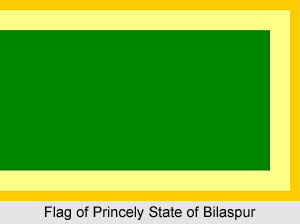 The Princely State of Bilaspur, also known as Kahlur State, was one of the prominent Princely states of India during the rule of the British Empire in India. The region, currently a part of the state of Himachal Pradesh was spread over a total area of 1173 sq km. The princely state was founded by Kahal Chand, who constructed a fort known as Kahlur Fort, which was named after him. Dip Chand was another eminent ruler of Bilaspur state who founded the city of Bilaspur, which was made the capital of the district.
The Princely State of Bilaspur, also known as Kahlur State, was one of the prominent Princely states of India during the rule of the British Empire in India. The region, currently a part of the state of Himachal Pradesh was spread over a total area of 1173 sq km. The princely state was founded by Kahal Chand, who constructed a fort known as Kahlur Fort, which was named after him. Dip Chand was another eminent ruler of Bilaspur state who founded the city of Bilaspur, which was made the capital of the district.
After India attained independence in August 1947, the princely state of Bilaspur was acceded to the Dominion of India, also known as the Union of India, on 12th October 1948. From the year 1950 to 1956, Bilaspur State was a state within the Union of India with Bilaspur town as its capital. From January 26th, 1950, the erstwhile princely state of Bilaspur was managed and administered by the Government of India as a separate C-Class state known as Bilaspur State. In the year 1954, the state was merged with the State of Himachal Pradesh as a province.
On 1 July 1954, the state of Bilaspur was dissolved by the Himachal Pradesh and Bilaspur (New State) Act, 1954 and was included into the State of Himachal Pradesh as Bilaspur district. The territory comprised of a total area of 106,848 hectares.
Rulers of Princely State of Bilaspur
The chronology of the rulers of the princely state of Bilaspur is discussed as follows-
* Raja Bir Chand
* Raja Kahal Chand
* Raja Kahn Chand
* Raja Sangar Chand
* Raja Megh Chand
* Raja Abhaisand Chand
* Raja Ratan Chand
* Raja Gyan Chand
* Raja Bikram Chand
* Raja Sultan Chand
* Raja Kalyan Chand
* Raja Tara Chand
* Raja Dip Chand
* Raja Bhim Chand
* Raja Ajmer Chand
* Raja Devi Chand
* Raja Mahan Chand
* Raja Kharak Chand
* Raja Jagat Chand
* Raja Hira Chand
* Raja Amar Chand
* Raja Bijai Chand
* Raja Tikka Anand Chand
Raja Tikka Anand Chand, who was the last ruler of Princely State of Bilaspur, was appointed as the first Chief Commissioner from the year 1948 to 1950. M.S. Himmatsinhji succeeded him as the Chief Commissioner from 1950 to 1952.






































